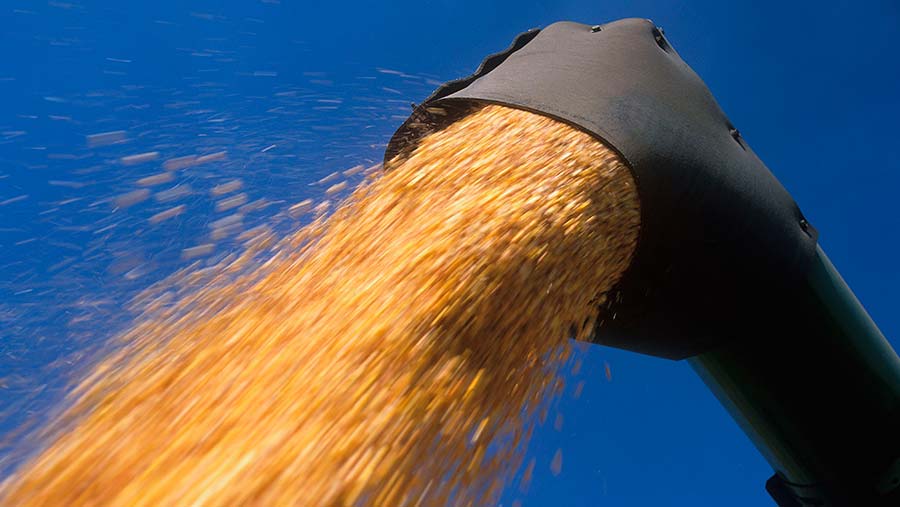Grain prices pushed down in volatile market
 © Design Pics Inc/REX/Shutterstock
© Design Pics Inc/REX/Shutterstock Grain prices have come under pressure for a second week but tight UK and world supplies mean there is a limit to how far they can fall.
Harvest pressure and higher than expected UK grain import figures for June brought wheat prices down last week.
Disappointing US export figures pushed Chicago futures down and other markets followed. EU export volumes are also way behind those of last year.
However, a mix of factors means the market is volatile. On the positive side, the further weakening of the pound on hard Brexit speculation has made UK exports competitive into northern continental Europe and to Ireland, limiting the damage for sellers.
See also Business Clinic: How can options help me cut grain price risk?
September ex-farm values averaged £169.65/t as Farmers Weekly went to press on Wednesday (29 August), down by about £2.50/t on the end of the previous week.
The global grain outlook predicts lower output for the second year , with consumption rising to an all-time high, so end of year stock levels will fall significantly.
Local factors
However, more local factors may move the market to a greater degree in the short term.
Speculation about the closure of at least one of the two north-eastern bioethanol plants for maintenance has added to market volatility, though neither operator will confirm its plans.
European crop size estimates continue to reduce, with the latest International Grains Council (IGC) report (23 August) estimating the size of the EU grain crop lower by 9m tonnes compared with its previous report and 6.7% lower than last year.
Additionally, the EU’s monthly Mars crop monitoring service this week cut its forecast for the EU’s 2018 grain maize yield to 7.57t/ha (7.64t last month). The soft wheat yield estimate was cut to 5.70t/ha (5.82t last month).
The German farmers union DBV has once again reduced its expectations for the country’s wheat harvest, putting it at about 18.6m tonnes, down 22.8% on 2017 and the lowest crop since 1993. Total German grain production is estimated by DBV at 35.6m tonnes, a 26% cut overall compared with 2017.
Depending on the size and quality of the UK crop, the reduced German supply may raise questions over the origin of UK wheat imports in 2018/19, said the AHDB.
Global maize outlook
The outlook for global maize production, which competes with wheat in many markets, has improved but the market still looks tight because of rising consumption.
Further nervousness was added recently with speculation that low grain stocks and poor milling quality in the Russian wheat crop would lead to export restrictions.
Subsequently the Russian Ministry of Agriculture confirmed that it was not imposing export restrictions, bringing prices back down.
However, market nerves were jangled by the addition of the rider “for now” to that announcement. Many traders think that Russia cannot sustain its current export rate.
Grain market factors push market both ways
- World grain output down for second year running at 2,063m tonnes (IGC) 1% down on 2016-2017
- World wheat harvest estimated down by 42m tonnes to 716m tonnes (IGC)
- Global maize stocks at end of current grain year forecast to fall by 41m tonnes to 256m tonnes, just 12 weeks’ consumption of maize (IGC)
- Uncertainty over likely final harvest sizes
- Russia – no export ban “for now”
- New peak of 370m tonnes in world trade (IGC)
- World total usage of grain predicted at new record of 2,129m tonnes (IGC)
- Global grain end of season 66m tonnes lower than last season at 538m tonnes (IGC)
- German harvest lowest since 1993/1994
- Markets depressed by US-China trade war
- Poor EU and US grain export figures
